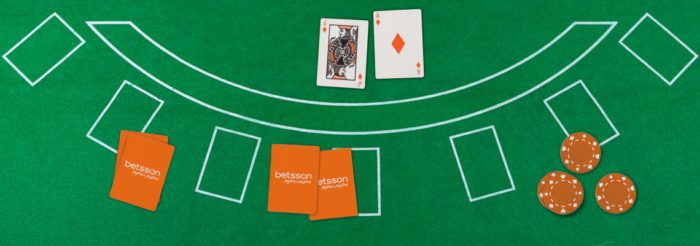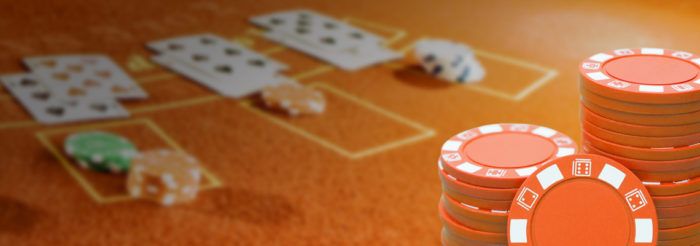What is the Gambler’s Fallacy?
No matter how good we think we are, no matter how many chips we have stacked, no matter how much money we walk away with, we’re all prone to mistakes. One of these mistakes is getting sucked into the renowned gambler’s fallacy, which is all too often the bane of casino players. But what is the gambler’s fallacy and how do you stop yourself from falling victim to it?
As with most things in life, knowing your enemy is the first step to victory. This in-depth guide will explain the concept, provide you with examples, and take a look at the psychology of a gambler so you know not to fall into the same trap. Whether you call it the gambler’s fallacy, the slippery slope fallacy, or the Monte Carlo fallacy, we’ve got everything you need to step up your game!
What is the Gambler’s Fallacy?
Most people, whether in the casino or in their day-to-day lives, have probably encountered the gambler’s fallacy. In its simplest terms, this concept is based on the belief that a random event is less or more likely to happen following an event or series of events. Essentially, the basic premise of the gambler’s fallacy is that something is likely to happen if it hasn’t happened in a while.
Origins
The true origins of the gambler’s fallacy are not fully known, but it was first proposed (in its modern iteration) by mathematical psychologist Amos Tversky and psychologist Daniel Kahneman. By analysing cognitive behaviors, such as the psychology of a gambler, they were able to attribute the gambler’s fallacy to the mistaken belief that gambling was a fair process that would somehow correct itself in the event of a winning or losing streak.
Example
The best example of the gambler’s fallacy in action is to examine it in relation to a coin toss. As you know, the chance of a coin toss landing on either heads or tails is 1:1, meaning that it is just as likely to come up tails as it is heads. So, if you flipped a coin 20 times and they all landed with tails up, under the gambler’s fallacy you’d predict that the next flip is more likely to come up heads. This prediction is based on the idea that, because tails has come up 20 times, the sequence will break eventually and heads will come up.
Regardless of how many times the coin has come up heads, the probability of it being heads or tails on the next toss remains 50%; each coin toss is a separate event that is independent of the last one, meaning that previous tosses have no bearing on future ones.
If you apply the gambler’s fallacy to roulette, you can see how easy it is to be sucked in. For instance, the chances of the ball landing on red are 50% (or just under with the house edge). So, if the ball landed on red after 10 consecutive spins, under the gambler’s fallacy you’d wrongly assume that the next spin will land on black. However, as with the coin toss, the probability of the result changing remains 50%. It’s just as likely to land on red as black.
Equally, the reverse gambler’s fallacy is to be avoided. In this scenario – after the coin has come up heads 20 times or the ball as landed on red 10 times – the player believes that, by some universal decree, the next toss or spin will result in the same result. Again, this disregards the probability and is simply a false assumption.

The Monte Carlo Casino Incident
One of the most famous examples of the gambler’s fallacy took place in the world famous Monte Carlo Casino – part of the reason why one of the most popular synonyms for the gambler’s fallacy is the Monte Carlo fallacy. During a game of roulette in 1913, the ball landed on black 26 times in a row.
While this is impressive for its high improbability, players at the casino incorrectly assumed the gambler’s fallacy and bet millions of francs against black, with the reasoning that the streak was causing an imbalance that would result in a long red streak. It did not.
Gambler’s Fallacy and Betting Strategies
Despite being widely disregarded, the gambler’s fallacy is a major factor in a number of casino betting strategies, especially negative progressive systems. The most famous example of this is the Martingale strategy, wherein you double your even money bet (red/ black, high/ low etc) every time you lose in the hope of winning back your losses when you eventually win. Martingale is most commonly used in roulette.
The basis of the Martingale system, and negative progression strategies in general, is that you will eventually win after a series of losses, which is the same ethos behind the gambler’s fallacy. In the same way that the ball could land in a red pocket 10 times in a row, you could easily lose 10 times in a row while chasing a win and exceed the table betting limits, effectively knocking yourself out of the game. This doesn’t mean that negative progression systems shouldn’t be used, as in some cases they can be effective, just keep the gambler’s fallacy in mind and don’t expect long-term profit!
Now that you know how to avoid the gambler’s fallacy, why not try out one of our online casino games and put yourself to the test!








